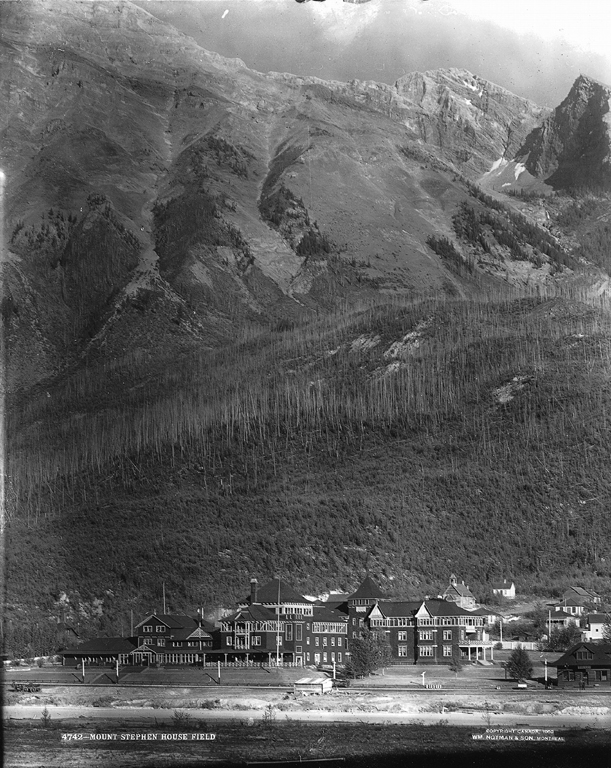Chapter 2. Transportation
2.2 Rail

In Chapter 1, we looked at the historic significance of railways as they laid the foundation for the modern tourism industry. That’s because in many places, including Canada and British Columbia, trains were an unprecedented way to move people across vast expanses of land. With the Canadian Pacific company opening up hotels in major cities, BC’s hospitality sector was born and rail travel emerged.
Profitability
However, starting in the 1940s and 1950s, the passenger rail industry began to decline sharply. In 1945, Canadian railways carried 55.4 million passengers, but just 10 years later passenger traffic had dropped to 27.2 million. The creation of VIA Rail in 1977 as a Canadian Crown corporation was an attempt by the government to ensure rail travel did not disappear, but in the years since its founding, VIA has struggled, relying heavily on federal subsidies in order to continue operations.
Between 1989 and 1990, VIA lost over 45% of its ridership when it cut unprofitable routes, focusing on areas with better potential for revenue and passenger volumes. From there, annual ridership has stabilized at around 3.5 million to 4.0 million passengers per year, slowly increasing throughout the 1990s and 2000s (Dupuis, 2011).
Despite this slight recovery, there are a number of challenges for passenger rail in Canada, which will likely require continued government support to survive. Three key challenges to a successful passenger rail industry are:
- Passenger rail must negotiate with freight for the right-of-use of tracks.
- There is a limited potential of routes (with the highest volume existing in the Quebec-Windsor corridor).
- Fixed-cost equipment is ageing out, requiring replacement or upgrading.
High-speed rail seems like an attractive option, but would be expensive to construct as existing tracks aren’t suitable for the reasons given above. It’s also unlikely to provide high enough returns to private investors (Dupuis, 2011). This means the Canadian government would have to invest heavily in a rapid rail project for it to proceed. As of 2020, no such investment was planned.
Spotlight On: Rocky Mountaineer Rail Tours
Founded in 1990, Rocky Mountaineer offers three train journeys through BC and Alberta to Banff, Lake Louise, Jasper, and Calgary, and one train excursion from Vancouver to Whistler. In 2013, Rocky Mountaineer introduced Coastal Passage, a new route connecting Seattle to the Canadian Rockies that can be added to any two-day or more rail journey (Rocky Mountaineer, 2014). For more information, please visit the Rocky Mountaineer website.
While the industry overall has been in a decline, touring companies like Rocky Mountaineer have found a financially successful model by shifting the focus from transportation to the sightseeing experience. The company has weathered financial storms by refusing to discount their luxury product, instead, focusing on unique experiences. The long planning cycle for scenic rail packages has helped the company stand their ground in terms of pricing (Cubbon, 2010). The product-experience is stratified into two “World-Class Service” guest experience choices, namely the Silver Leaf and the Gold Leaf for their three rail routes.
Rail Safety
In Canada, rail safety is governed by the Railway Safety Act, which ensures safe railway operation and amends other laws that relate to rail safety (Government of Canada, 2014b). The Act is overseen by the Minister of Transport. It covers grade crossings, mining and construction near railways, operating certifications, financial penalties for infractions, and safety management.
The Act was revised in late 2014 in response to the massive rail accident in July 2013 in Lac-Mégantic, Quebec. A runaway oil train exploded, killing 47 people, and subsequently MM&A Railway and three employees, including the train’s engineer, were charged with criminal negligence (CBC News, 2014).
In addition to freight management issues, a key rail safety concern is that of crossings. As recently as April 2014, Transport Canada had to issue orders for improved safety measures at crossings in suburban Ottawa after a signal malfunctioned in the area (CTV News, 2014a). According to Operation Lifesaver Canada (2014), in 2011, there were 169 crossing collisions across Canada, with 25 fatalities and 21 serious injuries. In general, however, Canada’s 73,000 kilometres of railway tracks safely transport both people and goods. And while railways in Canada, and elsewhere, are being forced to innovate, companies like Rocky Mountaineer (see Spotlight On above) give the industry glimmers of hope.
The rail industry shares some common history with the cruise sector. Let’s now turn our focus to the water and learn about the evolution of travel on the high seas.

